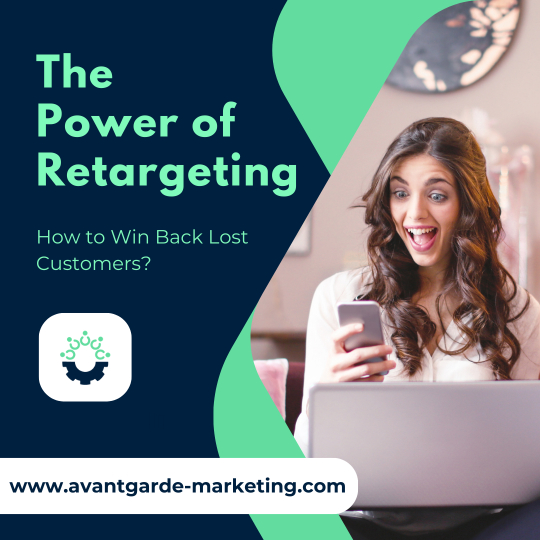
In the fast-paced world of digital marketing, businesses invest significant time and resources into attracting potential customers. However, not all visitors convert on their first interaction. Many businesses face the challenge of customers visiting their websites, browsing products or services, and then leaving without making a purchase. But what if there was a way to re-engage those lost customers and bring them back? Enter retargeting—a powerful marketing tool designed to help businesses win back those elusive customers.
What is Retargeting?
Retargeting is a digital marketing strategy aimed at re-engaging users who have previously interacted with your brand but didn’t complete a desired action, such as making a purchase or signing up for a newsletter. It works by using cookies or pixels that track visitors’ behavior on your website and then display personalized ads to them across other platforms like social media, search engines, or display networks.
In essence, retargeting keeps your brand top-of-mind for users who may not have been ready to buy the first time around, offering a second (or third, or fourth!) chance to convert them into loyal customers.
Why Do Customers Leave in the First Place?
Before delving into the benefits of retargeting, it’s important to understand why customers leave without converting:
Distractions: A visitor might have been distracted and left your website without completing a purchase.
Lack of Urgency: Some customers may be interested in your product but don’t feel the need to buy immediately.
Researching Options: They might be comparing products or looking for better prices.
Uncertainty: Questions about the product, shipping costs, or return policies might have led them to hesitate.
Technical Issues: Slow load times or website errors can frustrate potential customers.
Whatever the reason, retargeting allows you to address these concerns by reminding potential customers about your offerings and encouraging them to return.
The Benefits of Retargeting
Increased Conversions One of the most significant benefits of retargeting is its ability to boost conversions. Visitors who have already interacted with your website are more likely to convert compared to first-time visitors. Retargeting ads can reignite their interest by showing them products they viewed, offering limited-time discounts, or answering questions they may have had.
Improved Brand Recall Retargeting ensures that your brand stays top of mind. By serving ads to users who’ve interacted with your site, you remind them of your brand whenever they browse online, increasing the likelihood they’ll return when they’re ready to buy.
Personalized Engagement Retargeting allows you to personalize the content of your ads. You can show specific products or services based on the pages the visitor browsed, or offer targeted promotions that resonate with their interests. This personalization increases the relevancy of your ads, making them more effective.
Cost-Effectiveness Retargeting campaigns tend to have lower costs per conversion than traditional digital advertising campaigns. Since you’re targeting users who have already expressed interest in your brand, the ads are more efficient, leading to a higher return on investment (ROI).
Customer Journey Optimization Retargeting isn’t just about reminding visitors to complete a purchase. It’s also an opportunity to nurture leads through their entire customer journey. For example, you can serve different ads to users who visited your homepage, product pages, or even your checkout page. This tailored approach ensures that your ads are aligned with the stage of the customer journey the user is in.
Best Practices for Effective Retargeting
While retargeting can be highly effective, it requires a well-thought-out strategy. Here are some best practices to keep in mind:
Segment Your Audience Not all visitors are at the same stage of the buying process, so segment your audience based on their behavior. For instance, target users who abandoned their shopping carts with a reminder, while those who browsed product pages might benefit from a special offer.
Use Frequency Capping Showing the same ad too many times can annoy potential customers and have the opposite effect of what you intended. Implement frequency capping to limit the number of times a user sees your retargeting ads.
Create Dynamic Ads Dynamic retargeting ads use real-time data to display personalized content to users. These ads automatically show products that visitors have viewed on your website, making the ad experience more relevant and engaging.
Incentivize Return Visits Sometimes, a gentle reminder isn’t enough. Consider offering a discount, free shipping, or a limited-time deal in your retargeting ads to entice users to return and complete their purchase.
Measure and Adjust Retargeting campaigns should be continuously monitored and optimized. Track key metrics like click-through rates (CTR), conversion rates, and return on ad spend (ROAS) to see what’s working and make necessary adjustments.
Conclusion: Winning Back Lost Customers with Retargeting
In today’s competitive digital landscape, not every potential customer will convert on their first interaction with your brand. However, with retargeting, you have the power to remind them of your value, rekindle their interest, and win them back. By crafting personalized, timely, and relevant ads, you can turn lost opportunities into long-term customer relationships.
If you haven’t yet explored retargeting as part of your marketing strategy, now is the time. Not only can it help you recover lost customers, but it can also enhance your overall marketing efforts, ensuring your brand remains front and center as customers make their purchasing decisions.

